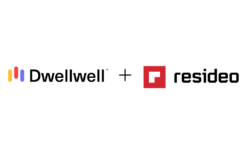A View of Network Video From the Driver’s Seat
The new report by J.P. Freeman Co. on the worldwide network and IP video market reveals a number of market drivers for the fastest growing of all the major security markets.
The most important one of all is the increasing tendency for video users to look at integrating their dedicated video networks — and even standalone video systems — with their IT networks. This has been rising in importance as video networks have become more popular.
Averaging a four on a five-point scale among manufacturers, this idea has major ramifications for everyone in the growing video security business, since it suggests that two industries that previously operated independently will accelerate their trend toward working together to serve their customers.
As security technology winds its way toward a digital future, the upshot of this major driver will be how it affects manufacturer revenue and income, alters established business strategies, changes product plans and modifies security department responsibilities. The job descriptions that go with these will be altered as well.
Conversion, DVRs Drive Market
The second most important of these drivers underlines the IT trend, namely the inevitable conversion of analog cameras to IP. This is the basis for purchasing upgraded video management and recording products with which those cameras best operate.
While this trend is still emerging, it could take hold quickly. Driving that need would be either an economic slowdown, which emphasizes cost reduction, or a fast, cash-generating uptick in the American, European, and Asian economies.
The third driver is the importance of the DVR and its ability to support video networks. These units dominate the recorder segment of the industry, but their long-term future is questionable due to the trends of integration and analog camera conversion.
The future of video messaging is the Internet, and manufacturers see the trend evolving along with the accompanying trend — also ranked fourth — of large video storage.
Demand Up for Remote Viewing
The fifth driver also relates to storage, but at the other end of the transmission. One of the great advantages of IP video is that video obtained at the camera can be accessed anywhere remotely through a browser. So “remote Internet video storage” is also a strong market since anyone has to put the video they’ve just examined away into a virtual pantry.
Lastly, there is the issue of central station monitoring, which has yet to demonstrate the expected vitality that many thought it had. Alarm monitoring was expected to transform itself into video monitoring.
There is a lot of video monitoring occurring, but only a small part of it is conducted in central stations. Much of it is localized, and it is expected that a great deal of it will remain that way.
The video surveillance industry refuses to stay still — which is also true of other security products. But these changes are so imperative that they are busting the boundaries of their own marketplace.
If you enjoyed this article and want to receive more valuable industry content like this, click here to sign up for our FREE digital newsletters!

Security Is Our Business, Too
For professionals who recommend, buy and install all types of electronic security equipment, a free subscription to Commercial Integrator + Security Sales & Integration is like having a consultant on call. You’ll find an ideal balance of technology and business coverage, with installation tips and techniques for products and updates on how to add to your bottom line.
A FREE subscription to the top resource for security and integration industry will prove to be invaluable.







